The Shaman’s Wife 1980
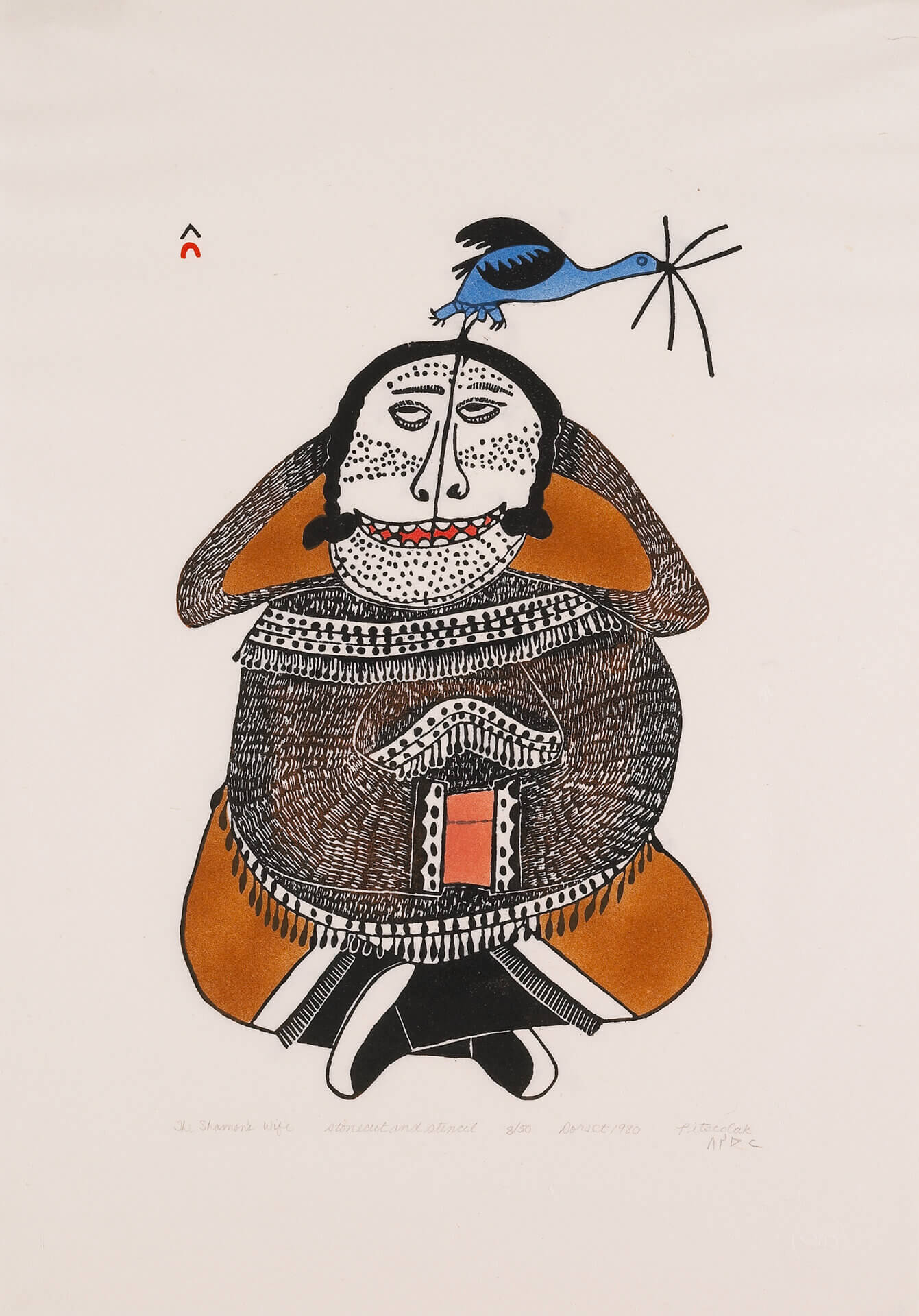
Pitseolak Ashoona, The Shaman’s Wife, 1980
Stonecut and stencil on paper
71 x 50.5 cm
Cape Dorset annual print collection 1980
In this gripping image Pitseolak strikes a balance between the familiar and the otherworldly. The figure of the shaman’s wife boldly faces the viewer and exudes a powerful sense of mystery, yet equal attention is given to the details of her traditional clothing and facial tattoos.
By 1980 the Cape Dorset printmakers excelled at the stonecut print and were able to capture the quality of Pitseolak’s energetic line. The linear outline in the print, not easy to accomplish, is in keeping with her original drawing. Even the texture of the sealskin clothing and the pattern of the facial tattoos appear to be active, true to Pitseolak’s interest in conveying movement throughout her artworks.
The woman sits in a meditative pose with arms tucked into sleeves and legs crossed. Her mouth is slightly distorted, and her eyes are turned up as if she is in a trance. On top of her head is a bird—a prevalent feature in Pitseolak’s art—which in this instance likely represents the shaman’s spirit helper. A shaman in a trance was believed capable of seeing through the eyes of the spirit helper and could therefore assist hunters in locating game.
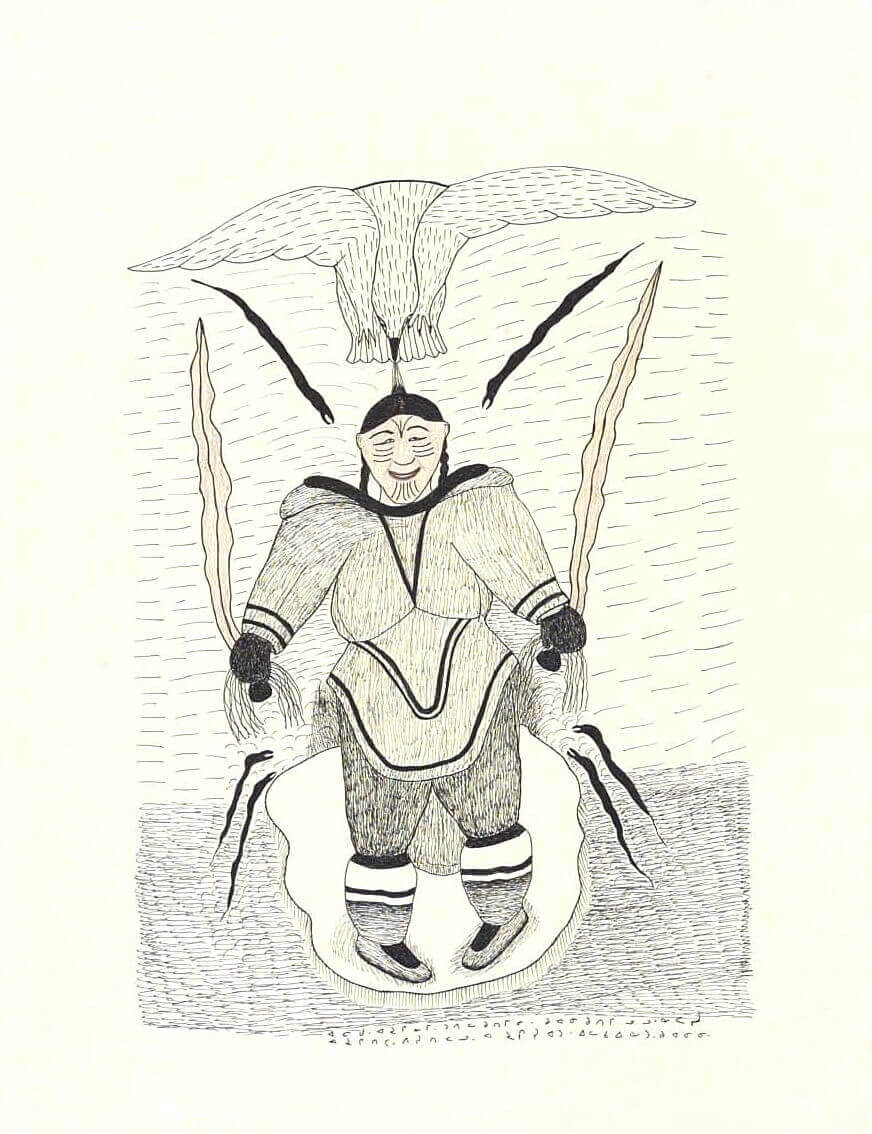
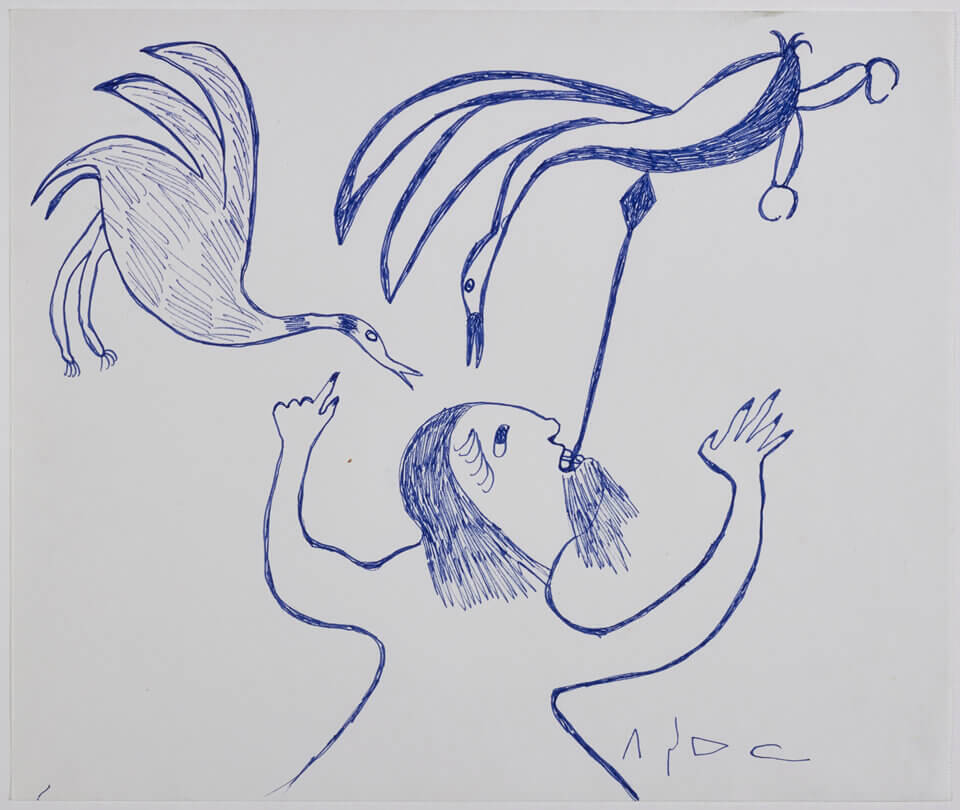
Shamanic practices appear in very few of Pitseolak’s works, largely in her earliest drawings and in the form of fantastic demon-like creatures. By the 1920s Pitseolak had converted to Christianity. In Pictures Out of My Life (1971), she admits she knew little about shamans, though she recalls that her father, Ottochie, was almost killed by one and that her family believed in their existence.
No evidence suggests that Pitseolak is depicting a specific shamanic ritual in this image. However, it is interesting to speculate on the continuity of thought that persists after a belief system is, at least to outside knowledge, no longer practised. Pitseolak’s daughter, Napachie Pootoogook (1938–2002), later created a series of drawings of shamans, including one of Aliguq, a female shaman with the same distinctive facial tattoos as the figure in The Shaman’s Wife. Aliguq’s husband, Alariaq, was also known to possess special powers and was related to Pitseolak. When she was a child, Pitseolak heard stories about Aliguq from her parents and others, as the shaman couple was well known in the Cape Dorset area, and she later shared these with her own children.

 About the Author
About the Author
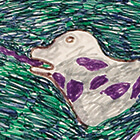 More Online Art Books
More Online Art Books
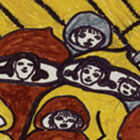 Acknowledgements
Acknowledgements